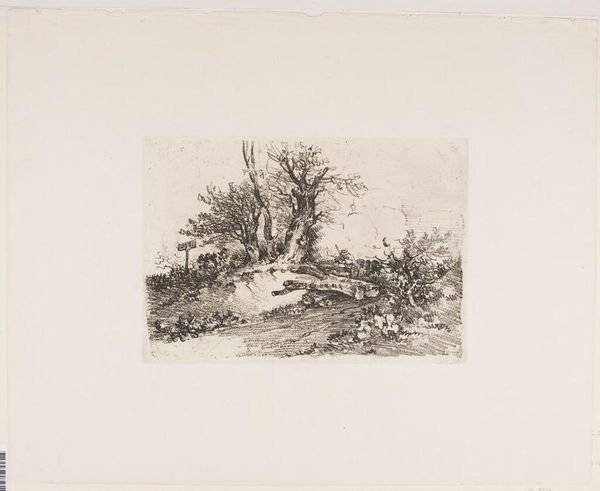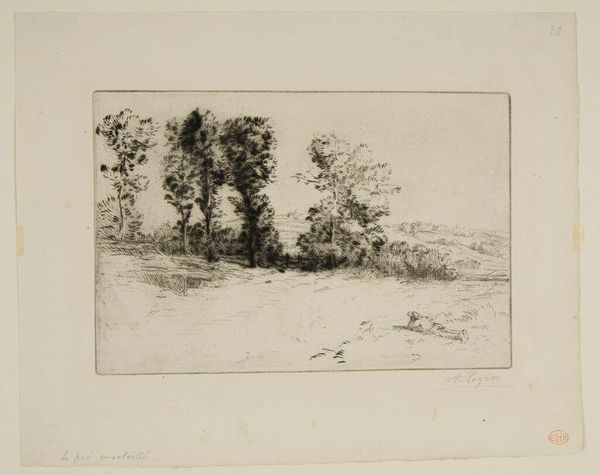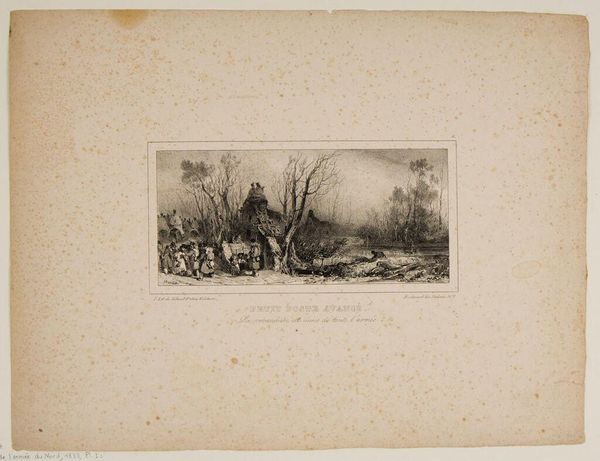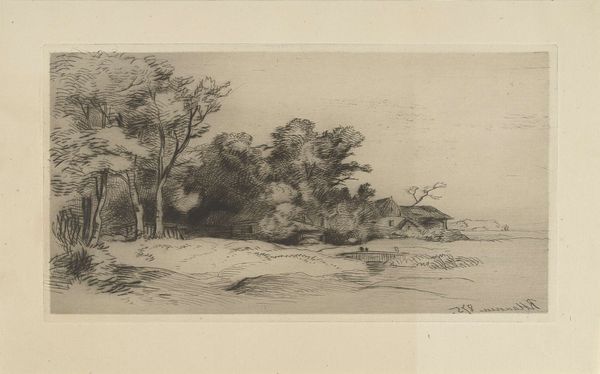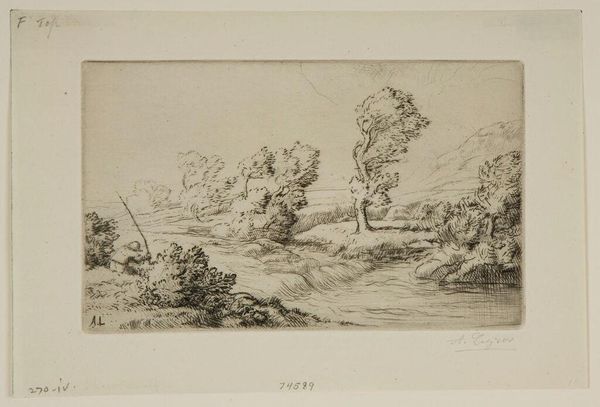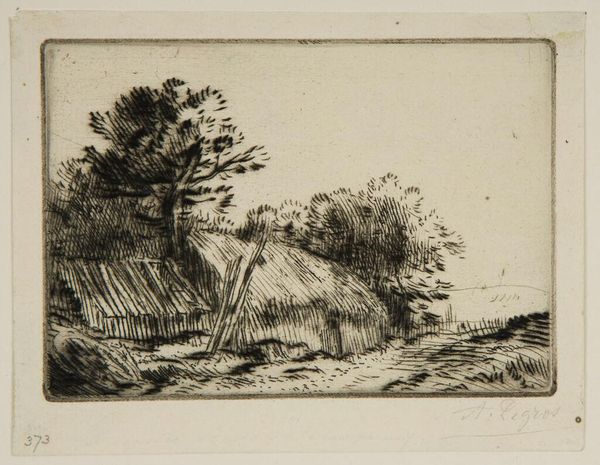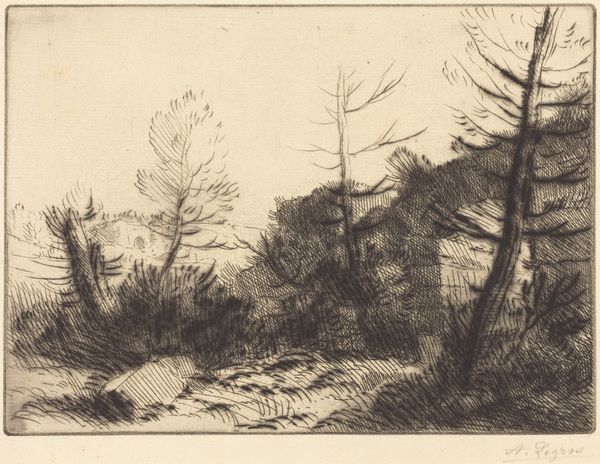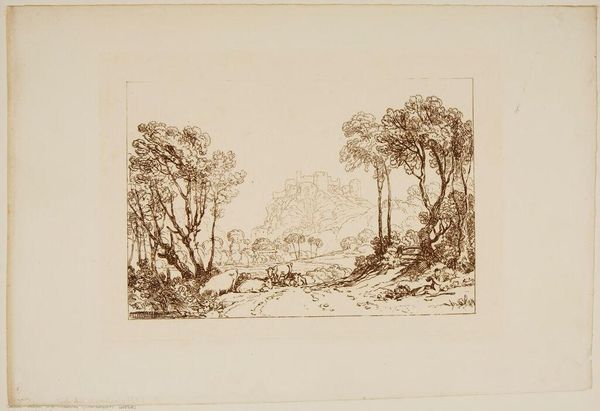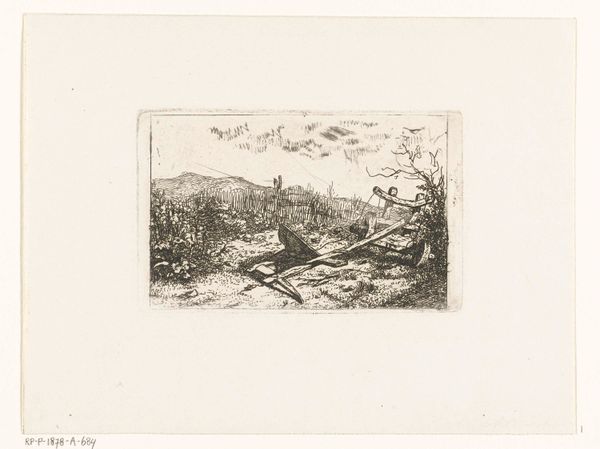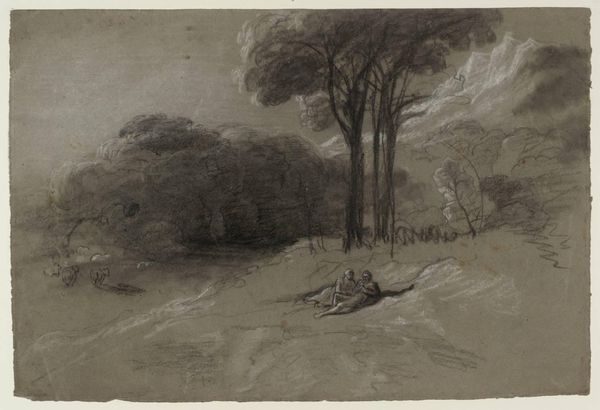
Copyright: CC0 1.0
Curator: Here we have Alphonse Legros's "Roman Ruin", currently residing in the Harvard Art Museums. Editor: It's incredibly delicate. You can almost feel the grit of the etching process, and how the pressure of the plate created that stark contrast. Curator: Absolutely. Legros's work often engaged with ideas of the picturesque and the sublime, placing historical ruins within a framework of Romantic melancholy. The imagery ties to the shift towards historicism in visualizing landscapes. Editor: I'm drawn to how the stark, almost skeletal trees frame the ruin. There's a real emphasis on line and texture, really showcasing the etcher's craft. The material is almost foregrounding the decline in a way the artist isn't. Curator: It’s fascinating how Legros uses this medium to evoke a sense of fading grandeur. He was certainly part of a larger movement of artists depicting ruins, reflecting changing perceptions and uses of historical sites. Editor: Seeing the way Legros manipulated the metal plate gives a much deeper understanding of his artistic vision, and how he intertwined materiality with the social context of ruins. Curator: Indeed, by examining the artwork through historical lenses and the technical processes involved, we gain a richer comprehension of Legros's intentions. Editor: Yes, it is by understanding both the artist’s hand and the historical moment, that we truly begin to uncover the depth of the work.
Comments
No comments
Be the first to comment and join the conversation on the ultimate creative platform.
